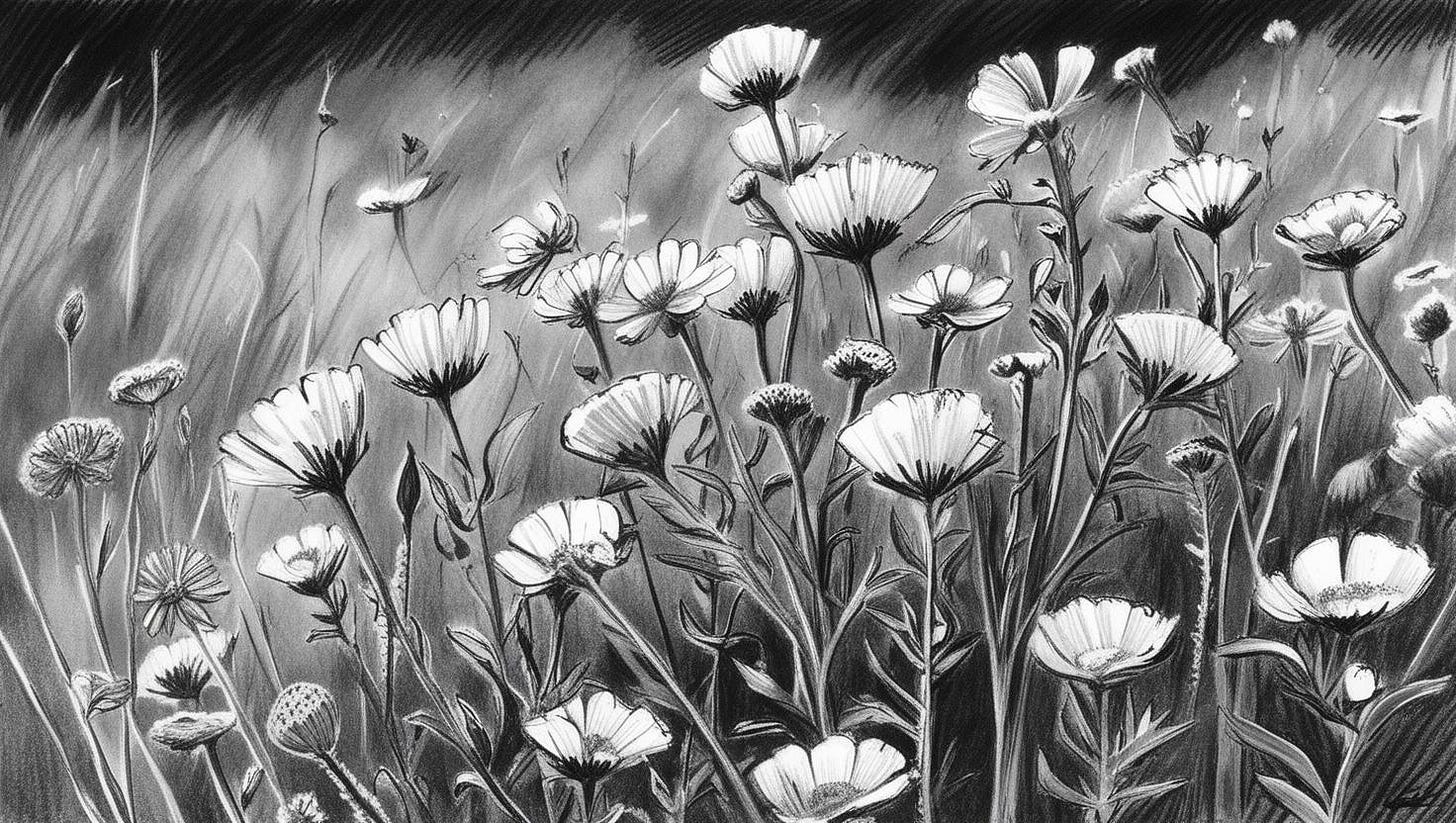You're in every bloom, waterfall, mountain peak. In every shrinking glacier.
That beautiful line you just read is from the exquisite piece I recently had the pleasure of consuming in Does It Have Pockets: If I Write I'm Not Thinking of You, Old Man, Does that Mean I Am?, in which ultra-talented author,
, (whom I believe is also a fellow Substacker), brilliantly transforms a moment of observing wildflowers into a haunting exploration of loss and memory.I thought it might be helpful to break down some of the key techniques she uses so we can learn how to apply them in our own flash.
First things first, go read the micro. It’s free. You’ll be glad you did. Then meet me back here for the breakdown!
⚡The Braid: Weaving Past into Present⚡
What Monpere Does
Look at how she builds this moment at Glacier National Park:
Opens in real time: "This avalanche slope glows with purple asters, trillium, pink mountain heather"
Slides into memory: "How we'd scour the web for wildflower sightings each spring"
Returns to present with scientific observation: "These are smart flowers here at Glacier National Park"
Moves back to regret: "I wish I hadn't rolled my eyes when you spoke flowers"
She never announces these shifts. No "I remember when" or "that made me think of." Instead, each detail flows naturally into the next, the way our minds actually work. The flowers aren't just flowers—they're portals between now and then.
Try This
Write down one thing you can see right now.
Write a memory it reminds you of.
Come back to the present through a detail that connects both moments.
⚡The Science of Emotion⚡
What Monpere Does
Watch how she uses botanical details:
First gives us flower shapes: "shaped like a parabola"
Then their purpose: "to focus the sun's warmth on their reproductive parts"
Finally, survival: "drooping bells to capture heat radiating from the earth"
These aren't just random facts. Each detail echoes the narrator's attempt to preserve warmth and memory in a cold world. The scientific precision makes the emotion more powerful because it's never directly stated.
Try This
Pick something you know a lot about (or can research).
List three technical details about it.
Choose the detail that best mirrors your character's emotional state.
⚡Speaking to Ghosts⚡
What Monpere Does
Track the subtle shifts in how she addresses her lost love:
Starts intimate: "But you know this, my love"
Moves to painful memory: "You said your biggest fear was me seeing the future you"
Ends with heartbreaking reality: "Dear aid, dear nurse, dear anyone"
The piece becomes a letter that acknowledges its own futility. That final "Please read this aloud to him, then shred" transforms everything we've read into both a love letter and a goodbye.
Try This
Write directly to someone who's gone (moved away, died, changed).
Share a secret only they would understand.
End by telling us why they'll never read these words.
⚡Your Turn: A Simple Exercise⚡
Choose your setting:
A place you know well (garden, kitchen, workshop)
Something there you can describe in detail
Start writing:
"This [place] is full of [specific details]..."
Let one detail remind you of someone
Add one fact or piece of technical knowledge
End by telling us why this person can't read your words
Keep it short—aim for < 300 words. Don't worry about making it perfect. Focus on moving naturally between what you see now and what you remember then.
Feel free to share your creation in the comments. Go!
Quick Example
This garden is full of tomato plants, their cages listing sideways in the August heat. You taught me to tie them with green garden tape, loose enough for growth. The vines still know how to climb without you, stretching toward light they can't fully understand. My phone has your number, but your daughter says you don't remember how phones work anymore...





I'm saving this for the next time I'm blocked. Thank you!